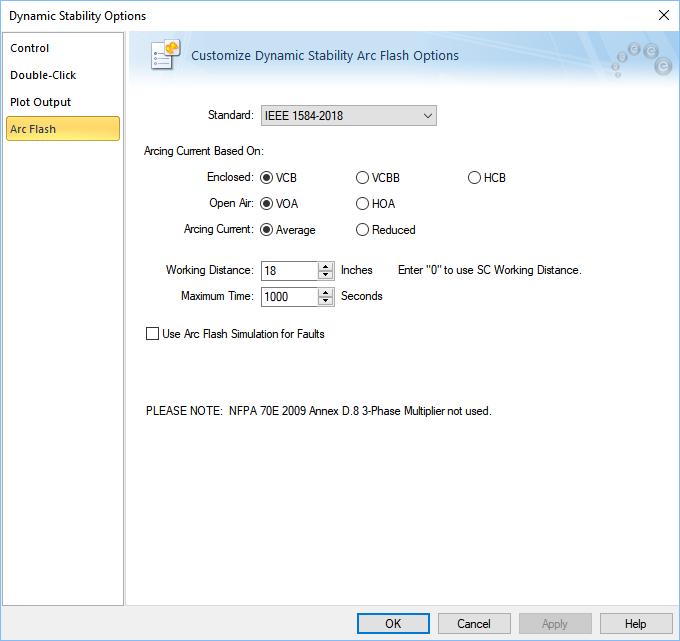Arc Flash Tab
To set dynamic stability options, from the Dynamic Stability focus, click Stability. You can also access the options from within the Database Edit focus by selecting Tools > Options > Analysis Options > Dynamic Stability.

Figure 1: Dynamic Stability Options – Arc Flash
| Option | Description |
|---|---|
|
Standard |
Select the standard to use for dynamic stability. You can choose between IEEE-1584-2002 or IEEE-1584-2018. |
|
Arcing Current |
You can specify the arcing current to use.
See Arc Flash Hazard Tab for additional information. |
|
Arcing Current Based On |
You can specify the electrode configuration and arcing current you want to use when the IEEE 1584-2018 standard is selected. For more information on electrode configuration, see Electrode Configuration . |
|
Working Distance |
When the Dynamic Stability Options define the working distance, any user-defined trip times entered in a Bus Data dialog box are ignored. However, if you enter “0” for the Dynamic Stability Working Distance, then the Working Distance defined in the Short Circuit Options are used, including the bus values (when entered). Also, the working distance in Short Circuit Options are always converted to inches for the dynamic stability working distance output. |
|
Maximum Time |
Maximum limit of arc duration. If the trip time is very long, then simulation is carried out up this maximum time. |
|
Use Arc Flash Simulation for Faults |
When this check box is selected, bus faults calculate arc currents and arc flash hazard. All calculations performed are as per the selected IEEE 1584 standard. When the check box is not selected, bolted fault currents are calculated. |
